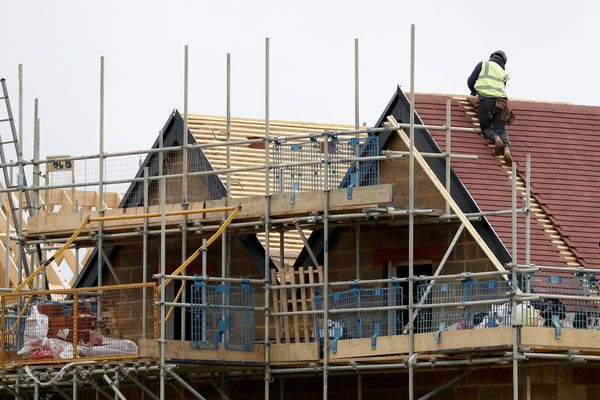
A city council declaring a concrete car park a heritage site sounds like a satire of architectural pretension. But in Melbourne, it could soon become reality.
An official review recently recommended a seven-storey car park in Carlton be covered by a heritage overlay. The report’s authors declared it “striking, robust and bold”, despite locals telling The Age they find it “pretty grey” and that it would be better used for housing. The City of Melbourne will make a final decision later this year.

I work across the road from the “Brutalist” slab and don’t find its hulking frame particularly inspiring on my lunch breaks — nor do I value the dead, expensive space it takes up, especially at a time when cities internationally are increasingly junking car parks for walkable public spaces.
The prospect of this car park being repurposed as housing is particularly appealing to local workers like me, who must fork out higher rents to live within cycling distance or traipse long distances from more affordable burbs. This is partly because Carlton is a notoriously low-rise area despite its proximity to the CBD, largely due to heritage restrictions.
Carlton is hardly the only heritage battlefield. Across town in Footscray, Maribyrnong City Council is seeking to extend a surprise interim overlay on around 900 suburban homes. And it’s not just a Melbourne problem — in Brisbane, prospective renovators in Moorooka are also fighting increased heritage restrictions.
Could relaxing heritage laws in Australia’s cities allow more homes to be built, trimming commute times while lowering rent and property prices?
A maze of heritage zones
Heritage overlays now cover vast areas of our inner and middle-ring suburbs.

It’s not just overlay areas that are affected, but adjacent areas too. In East Melbourne, a nine-storey apartment block was recently knocked back because it adjoined a heritage-listed property, introducing steeper hurdles on height and design. A dilapidated office building, which The Age called “one of Melbourne’s worst eyesores”, remains standing following the local council rejecting a 77-apartment block late last year (partly due to it being a few minutes’ walk from the heritage-listed Royal Exhibition Building).
Critics suggest such restrictions, often based on niche aesthetic considerations or locals’ self-interested NIMBYism, can slow densification. Density is one of two major remedies for our housing affordability crisis — the other being removing tax concessions, which overstimulate demand.
Yet heritage defenders counter that overlays don’t prevent development; they merely ensure developments preserve certain unique architectural elements. The Australian Institute of Architects’ Robert Caulfield claimed the Carlton car park, for instance, could still be repurposed as housing, so long as the existing structure wasn’t demolished.
So, can we balance both heritage and development?
Heritage, commutes and affordability
In Sydney, analysis by Domain found there remains a high concentration of heritage listings in affluent inner-ring suburbs and virtually no listings in lower socio-economic areas. Experts found this “can prevent more housing being built in well-located, liveable suburbs”, which either pushes development further afield or lowers the overall housing stock.
In Melbourne, Domain found Albert Park was the city’s most expensive suburb per square metre. Why? As local real estate agent Warwick Gardiner explained, “The major drawcard is that it’s quiet … All the houses have a heritage overlay, so there aren’t masses of apartments.”
While developers can theoretically build on heritage sites, in practice the rules can be difficult to work around, leaving many worthy projects mothballed — and affluent areas free of pesky newcomers.
Planning minutia can be dominated by aloof urban history buffs, or war-gamed by established homeowners to indulge their change aversion and protect their property values. But when you’ve got younger and poorer people struggling to meet rising rent payments, spending hours commuting to and from work, and with dwindling prospects of homeownership, residents of one of Melbourne’s most expensive suburbs feeling a bit flustered by prospective changes are hardly the constituency our laws should be catering for.
Heritage listings should be reserved for buildings of true historic significance — particularly public buildings like historic pubs and cultural venues — lest our cities become private museums for dead architecture styles, which most living people can only visit after a two-hour drive.
Parking the anti-growth mindset
Heritage rules are just one of the many restrictions on housing supply that are making well-located properties scarce and expensive, all to the convenience of existing owners.
NSW Labor took a welcome cudgel to such rules last week by vowing to significantly increase density around metro stations and review councils’ housing targets if it wins the March state election. Its pledge is a modest start, but outdoes the Perrottet government, which reduced building heights and halved the number of new homes planned for the forthcoming Crows Nest Station on Sydney’s wealthy North Shore due to neighbourhood backlash.
Streets surrounding transport hubs are the best places to densify, allowing more people to live closer to public transport and reducing their dependency on cars. If we expedited such developments, perhaps we wouldn’t need so many car parks.
Are heritage listings worsening Australia’s housing crisis? Let us know by writing to letters@crikey.com.au. Please include your full name to be considered for publication. We reserve the right to edit for length and clarity.







